Reviews
Vija Celmins’s Stunning Show at the Met Breuer Is a Master Class in How Pictures Don’t Work Anymore
The survey presents the artist's counterintuitive mission: to create a totally realist art that shows how the real is out of reach.
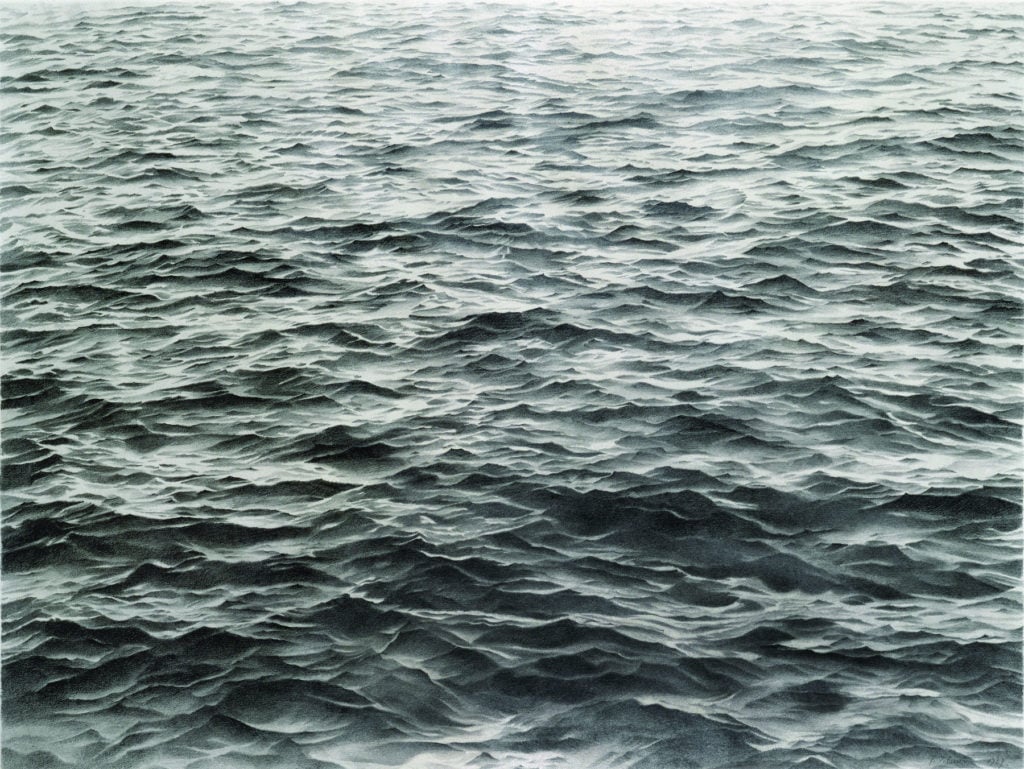
The survey presents the artist's counterintuitive mission: to create a totally realist art that shows how the real is out of reach.

Blake Gopnik

It’s the most basic function a picture can serve: Just pointing to things in the world, to say “Look at that.” That simple, primary duty of “ostension,” as a philosopher might put it, outweighs all the later decisions an artist makes about how an image should look. Over tens of thousands of years, pictures, in any number of styles, have done the job of pointing to prehistoric bison, medieval saints, Japanese courtesans, and even cans of Campbell’s soup. So what are the chances that someone could come up with a new set of pictures—highly realistic pictures, at that—that manage to bypass or even undo art’s vital finger-pointing?
That, amazingly, is what Vija Celmins has achieved, again and again, over her 50-year career in Los Angeles and then New York. In the Celmins retrospective now at the Met Breuer in Manhattan, that achievement gives her art a philosophical depth, and a profound weirdness, that overcomes a first impression of straightforward image-making.
Celmins’s early paintings, from the mid-1960s, do in fact offer a standard, Pop art-y job of pointing at things in our domestic world: a heater, a lamp, an electric fan. Those subjects may not be much to point at, but they’re still caught up in the venerable artistic task of “looking at the overlooked,” to borrow Norman Bryson’s famous phrase. By the middle of the next decade, however, Celmins started messing with art’s normal ostensive aims.
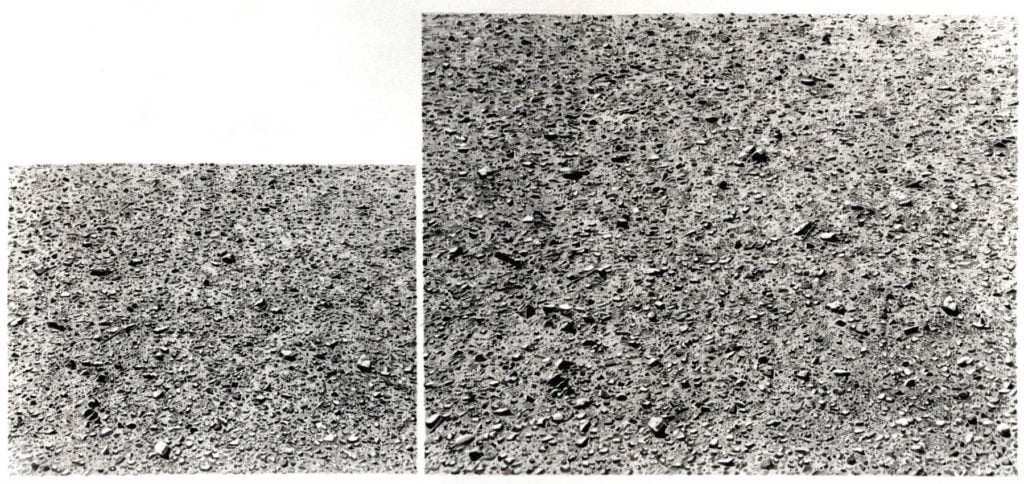
Vija Celmins, Untitled (Double Desert) (1974). Collection of Harry W. and Mary Margaret Anderson © Vija Celmins, courtesy the artist and Matthew Marks Gallery.
In Untitled (Double Desert), from 1974, she provides two identical images of the same little patch of dry ground, side by side—meaning that one of them, at least, has nothing left to point to that hasn’t already been pointed to by the other. And yet Celmins has spent vast labor achieving that non-pointing, using the sharpest of pencils to capture just about every grain of sand in her scene… twice. That labor alone tells us that something substantial must be at stake—more, certainly, than a doubled demonstration of traditional realist skill.
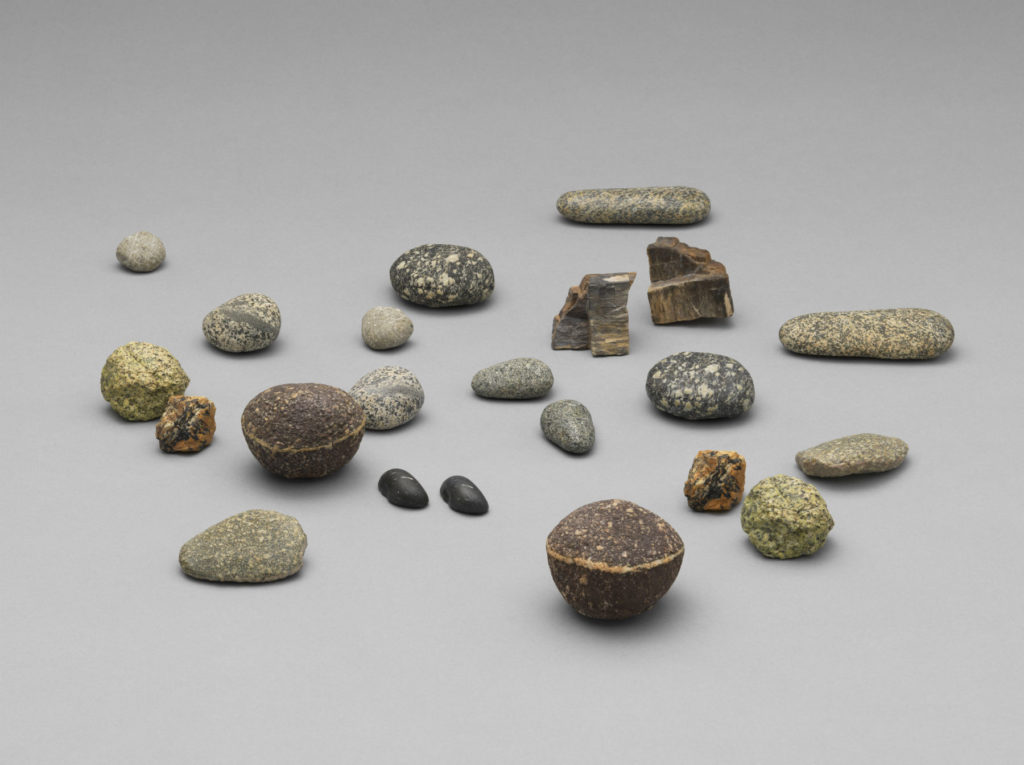
Vija Celmins, To Fix the Image in Memory I–XI (1977–82). The Museum of Modern Art, New York, gift of Edward R. Broida in honor of David and Renee McKee © Vija Celmins, courtesy the artist and Matthew Marks Gallery Image © The Museum of Modern Art/Licensed by SCALA / Art Resource, NY.
In the Renaissance, when European theorists got busy thinking about representation, they talked about the way the new realist art could make “absent things present.” Celmins’s utterly peculiar update on that notion is to make present things present, replacing function with hard-won redundancy. Doublings like the one in her desert diptych happen again and again in her art, including in the sculptures she has gone on to produce in more recent decades. She presents real found rocks and pebbles, of no particular distinction, alongside hand-made sculptures of precisely the same banal stones, shaped and painted to perfectly reproduce each and every one of the real ones. Celmins has deployed the obsessive efforts of trompe l’oeil to fool us into seeing something that’s already there for us to look at.
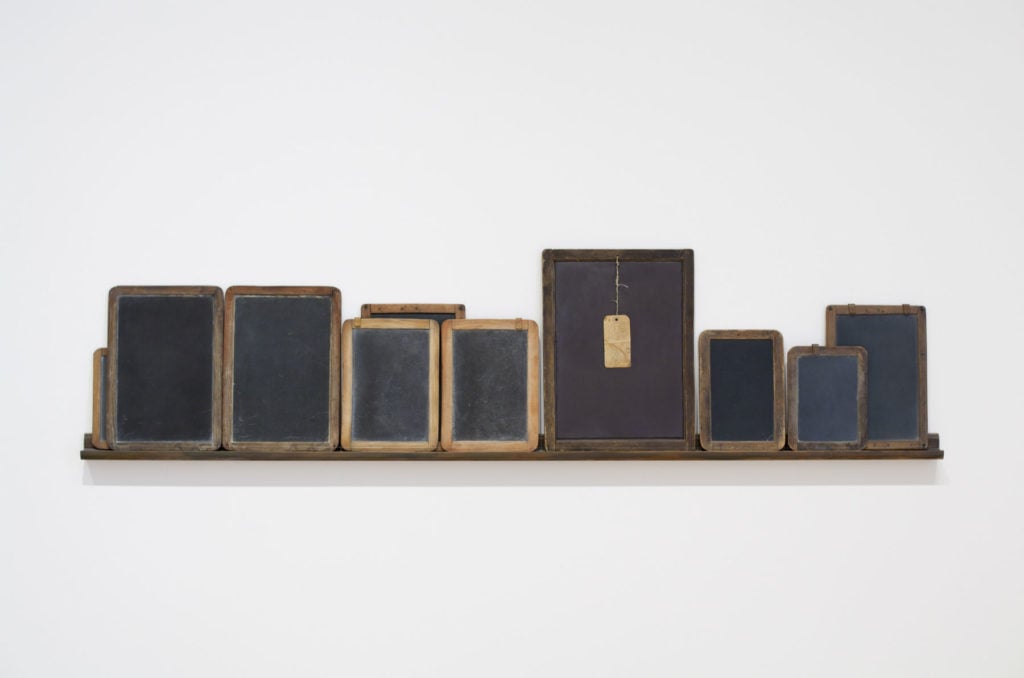
Vija Celmins, Blackboard Tableau #1 (2007–10). San Francisco Museum of Modern Art, purchase, by exchange, through the bequest of Elise S. Haas © Vija Celmins, courtesy the artist and Matthew Marks Gallery.
She plays the same trick with old grade-school blackboards that she bought here and there and then had fabricated in perfect facsimile. Erased of all the scribbled content they might once have carried, her doubled blackboards actually depict the content-less state of all her duplications.
Even works by Celmins that don’t involve doublings seem to fail in their pointing function. Drawn or sometimes painted as black-and-white monochromes, her images almost always make clear that they are perfect reproductions of photographs that have preceded them—meaning that any ostension that needed doing was already done in those photos. Why point again at something that has already been pointed out?
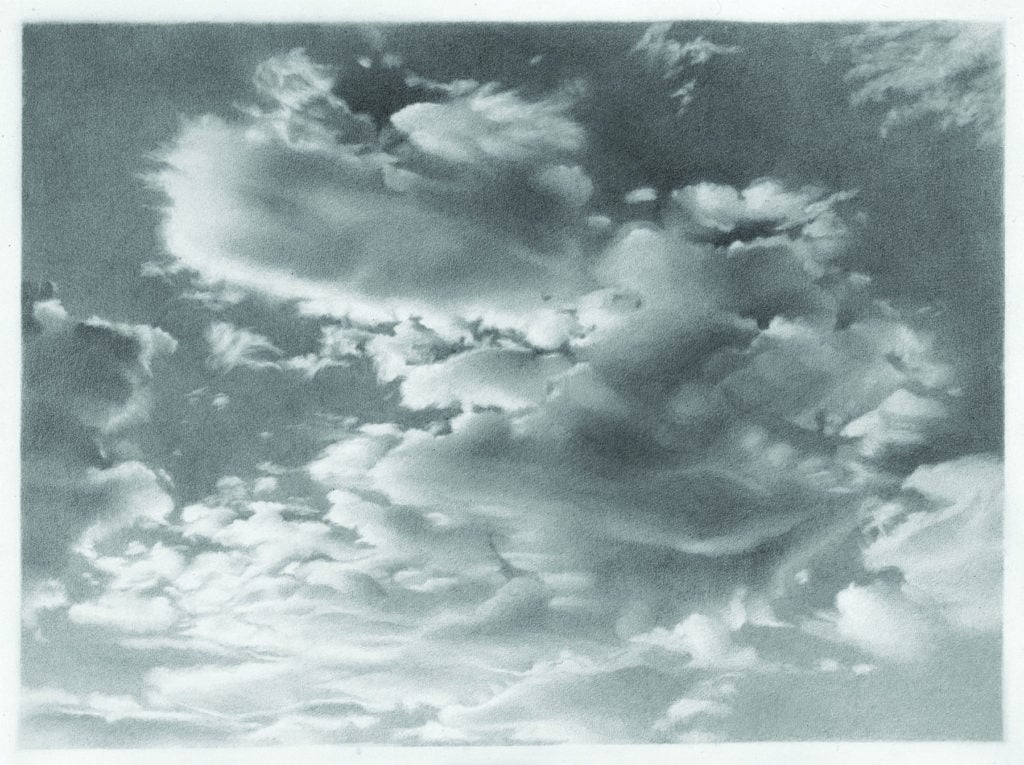
Vija Celmins, Clouds (1968). Collection of Eba and Jerry Sohn © Vija Celmins, courtesy the artist and Matthew Marks Gallery.
And even before they got hand-reproduced, many of the source photos chosen by Celmins didn’t really do anything like a decent act of picking-out. When she presents us with a half-dozen images of various choppy waters, or of different patches of the night sky, or of assorted spiders’ webs, their subjects are so generic that one of her pictures could stand for the whole series. The tiny differences between each rectangle of sea or sky or web, however fanatically recorded by Celmins (or her camera), don’t actually add up to information we can use. Each picture, and each series, just confirms the mental image we already have of its banal subject, thanks to the thousands of photos of it that we’ve come across before. You could say that Celmins depicts the over-seen.
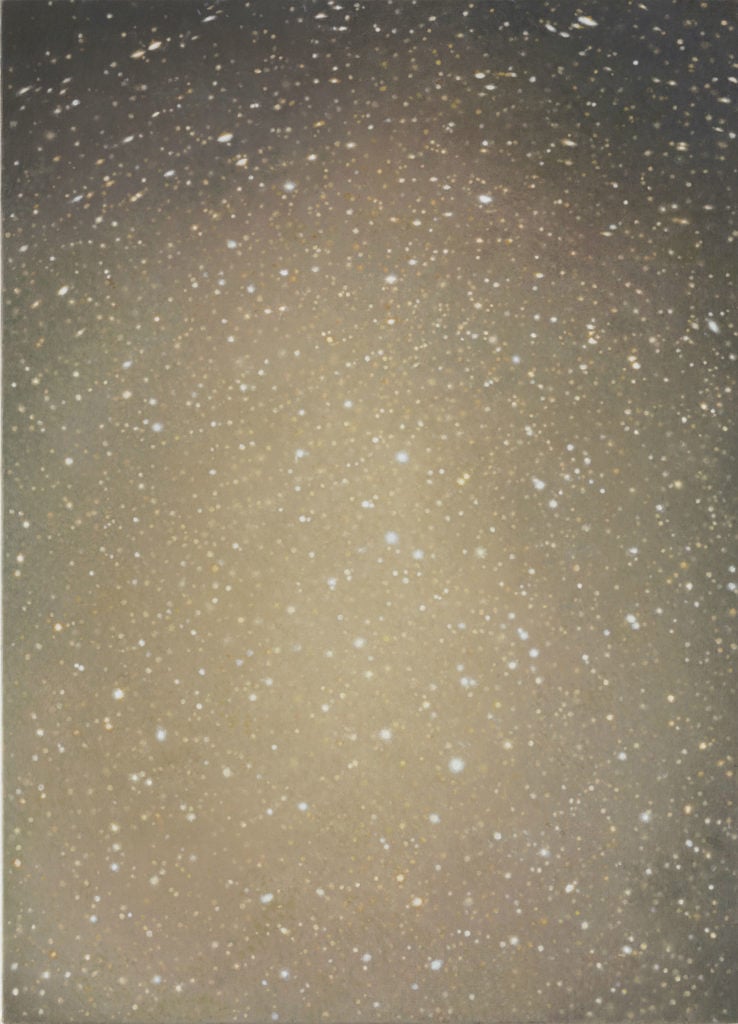
Vija Celmins, Night Sky (Ochre) (2016). Private collection © Vija Celmins, courtesy the artist and Matthew Marks Gallery.
Although Celmins’s images look vastly informative, almost scientific, in their surfeit of detail, there’s rarely any novel, usable knowledge to be gleaned from them. Even when she blows up a single one of her starry nights to fill a wall, it carries precisely the same content—the same number of dots of light, in the same positions—as if it were presented much smaller. This isn’t about zooming-in closer on the real world so as to get at more detail in it; it’s just enlarging an image. The increase in scale involves more work, maybe, but to no more effect. And that’s precisely the point.
If futility is at hand in Celmins’s pictures, that’s hardly surprising. She came of age as an artist at the moment when painting, along with most hand-made imagery, had been declared moribund or maybe plain dead, and especially lifeless when it came to the old task of ostension, which had been usurped by photography.
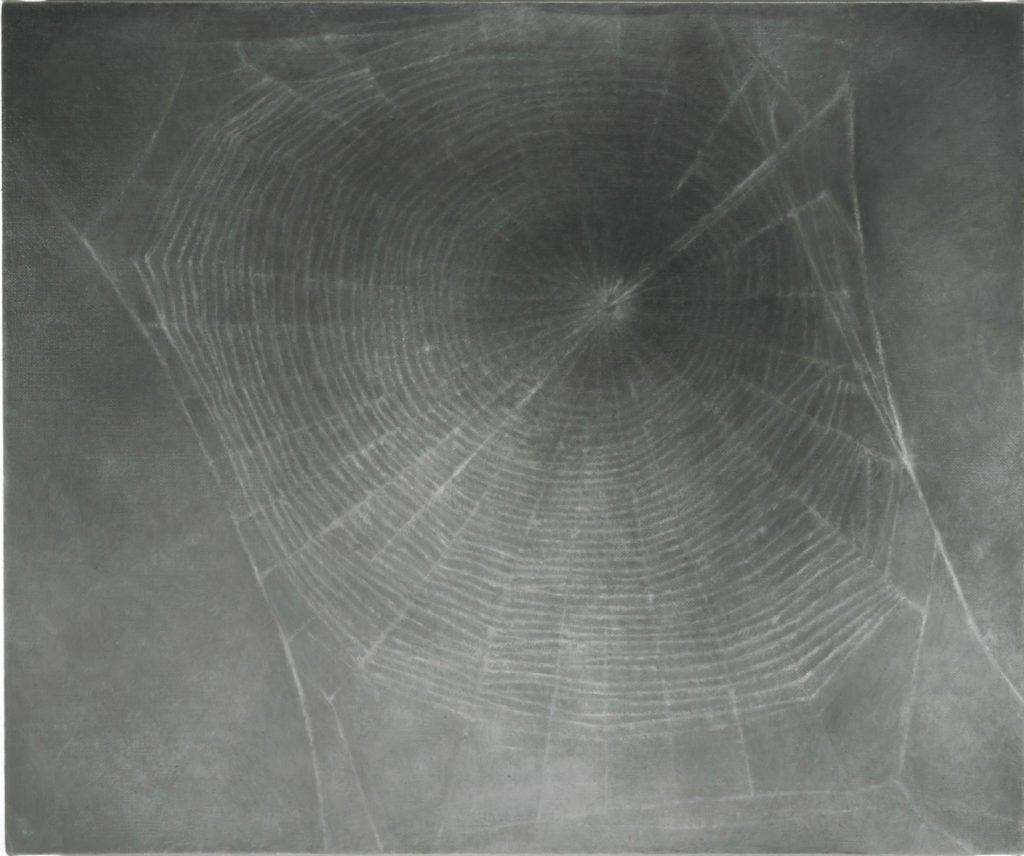
Vija Celmins, Web #3 (2000–2002). The Museum of Modern Art, New York, gift of Edward R. Broida, 2005 © Vija Celmins, courtesy the artist and Matthew Marks Gallery.
What Celmins did was to recognize—and depict—what a peculiar and unlikely state that was. Her work shows how, after all those millennia of picture-making, the 20th century ushered in a moment when not pointing at last became an artistic possibility. Modernism had made that possible the easy way, with abstraction. The postmodern art of Celmins took the much harder path of doing it with high realism. It proves that there’s still life left in depiction, by showing that it—and only it—has the power to point to its own disempowerment.
Blake Gopnik is the author of Warhol, a comprehensive biography of the Pop artist forthcoming from Ecco at HarperCollins.
“Vija Celmins” is on view at the Met Breuer, 945 Madison Avenue, New York, New York, September 24, 2019–January 12, 2020.